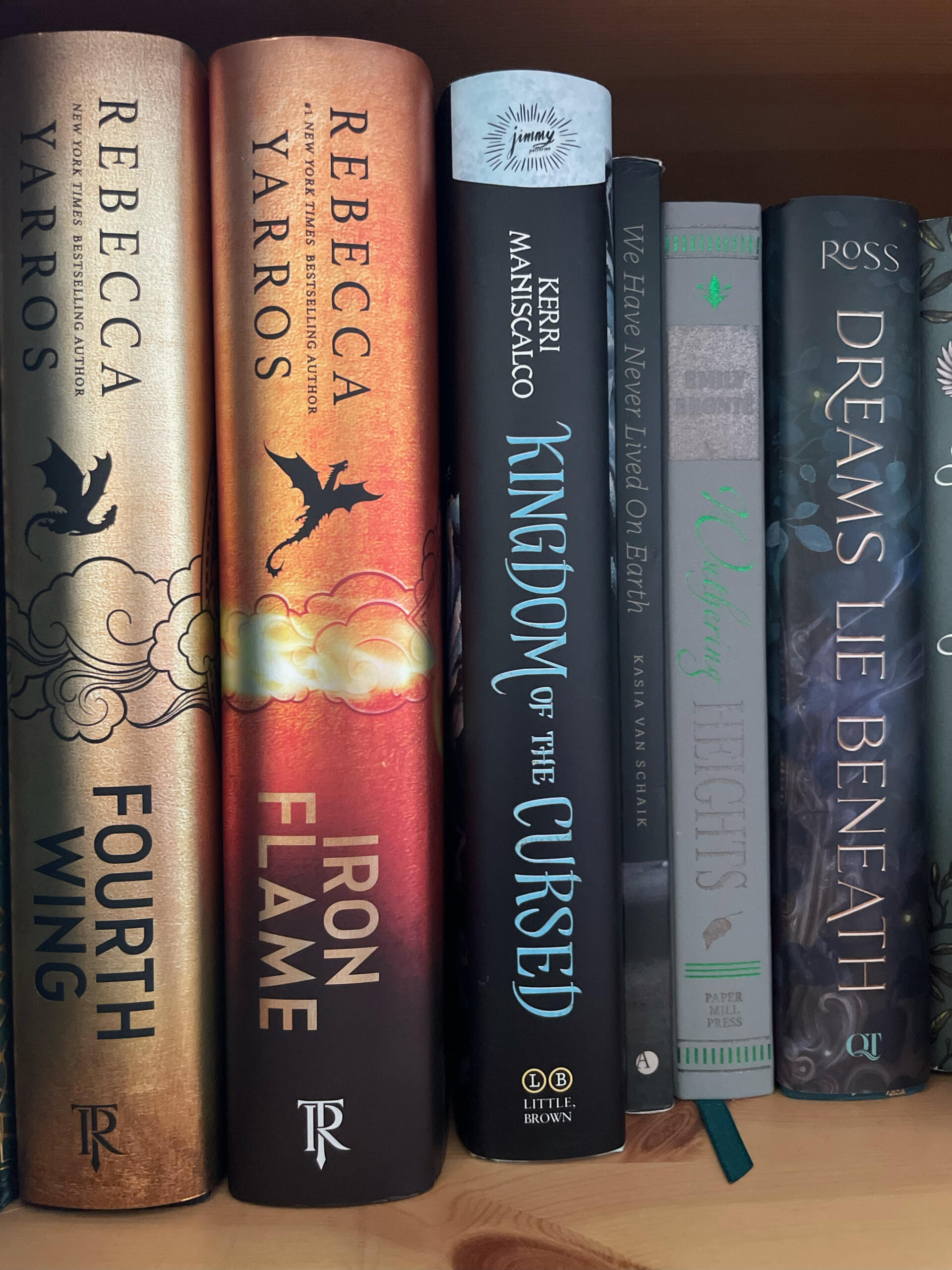Fight or fly? Discover the sequel of Fourth Wing by Rebecca Yarros.
“The first year is when some of us lose our lives. The second year is when the rest of us lose our humanity.” — Xaden Riorson
Iron Flame is the second book of the adored fantasy The Empyrean series. I think it is rare when the second book of a series is as good or better as the first, which is the case for this series.
Rebecca Yarros left us on a cliffhanger in Fourth Wing (May 2023) for months before releasing the anticipated Iron Flame (November 2023). It is a high fantasy series about a war college with magic, dragons, mystery, and adventure. If you are a fan of A Court of Thorns and Roses, Caraval, Fable, or Throne of Glass, you will also love this series.
After surviving her first year at Basgiath War College, main character Violet Sorrengail is ready to fight her way to graduation. Whether it’s the new vice commander determined to diminish Violet’s power or the consequences of learning the truth her government hid for centuries, Violet has obstacles to face—or risk her life and her lover’s. Violet uses her wits and friends to navigate these challenges, but it might not be enough.
Violet is described in the book as living with a physical disability. She gets injured much more easily than everyone else, and although it is not explicitly said in the book, Yarros said in an interview that Violet’s physical disability greatly resembles a chronic condition called Ehlers-Danlos syndrome (EDS), which affects the body’s connective tissue.
The Empyrean series is a great fantasy series because it draws the reader into its world and makes them escape their reality. It has an intricate magic system and world-building while still keeping it relatively simple for readers who are not familiar with fantasy. The characters are well-rounded and driven, adding to the story’s depth.
Finally, the series includes inner conflict experienced by Violet, small-scale conflicts with other characters, and larger-scale conflicts against a magical, powerful group. The plots and conflicts are layered ideally one after the other to keep the readers interested and engrossed in the story, which is helpful if you usually find fantasy to be long and heavy.
Iron Flame covers critical themes such as resilience, betrayal, and ethical dilemmas. The main characters are at war against their government, fighting their lies and dark magic wielders. It also conveys the repercussions of betrayal, from a mother’s love to keep her children safe amidst the chaos to a prude friend who doesn’t question the rules. It shows great bravery and resilience to stand against someone who was supposed to protect you.
In Iron Flame, what struck me the most was the character development. Violet becomes more confident in her abilities; she is confident in her knowledge and her power. She does not shrink away from her power but embodies it and becomes one with it. The author sews multilayered characters that could not be categorized as simply evil or good—every character’s story explains their morally grey decisions.
Usually, the second book of a series lacks movement and is relatively slow, but in Iron Flame, every chapter and every scene flows. Every word contains hidden meaning or foreshadows answers. The plot leaves us on the edge of our seats; from one moment to the next, unexpected things happen, a discovery, an unexpected attack, or a gruesome death. The complex plot with its multiple subplots keeps the story fluid and engaging.
Since its release, the series has been compared to A Court of Thorns and Roses by Sarah J. Mass because of its exceptional narrative and storytelling. Like in Maas’ books, the characters are so compelling and relatable that you will easily find yourself deeply invested in their fate. The love interests in both series are also very similar—mysterious, almost identical powers, and morally grey.
Since Iron Flame is very popular and its reviews are diverse, it might be hard to decide whether it is worth it or not. It is an easy book for fantasy beginners because it doesn’t have complicated world-building or a complex magic system. It is, however, supposed to be a five-book series, so that might not be everyone’s cup of tea.
I was reluctant to finish this book because it meant parting ways with an enchanting world and characters I consider home. The Empyrean series has secured its place among my favorites. Yarros’ incredible storytelling has captivated my heart and soul.
Rating: 5/5 stars
